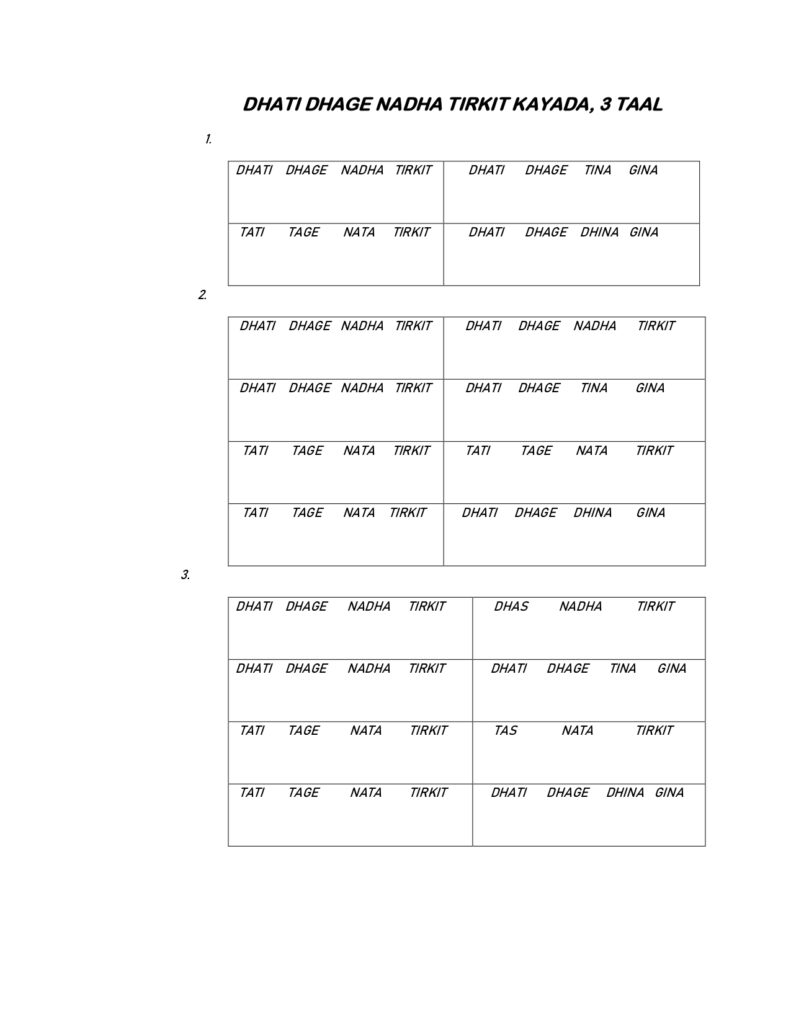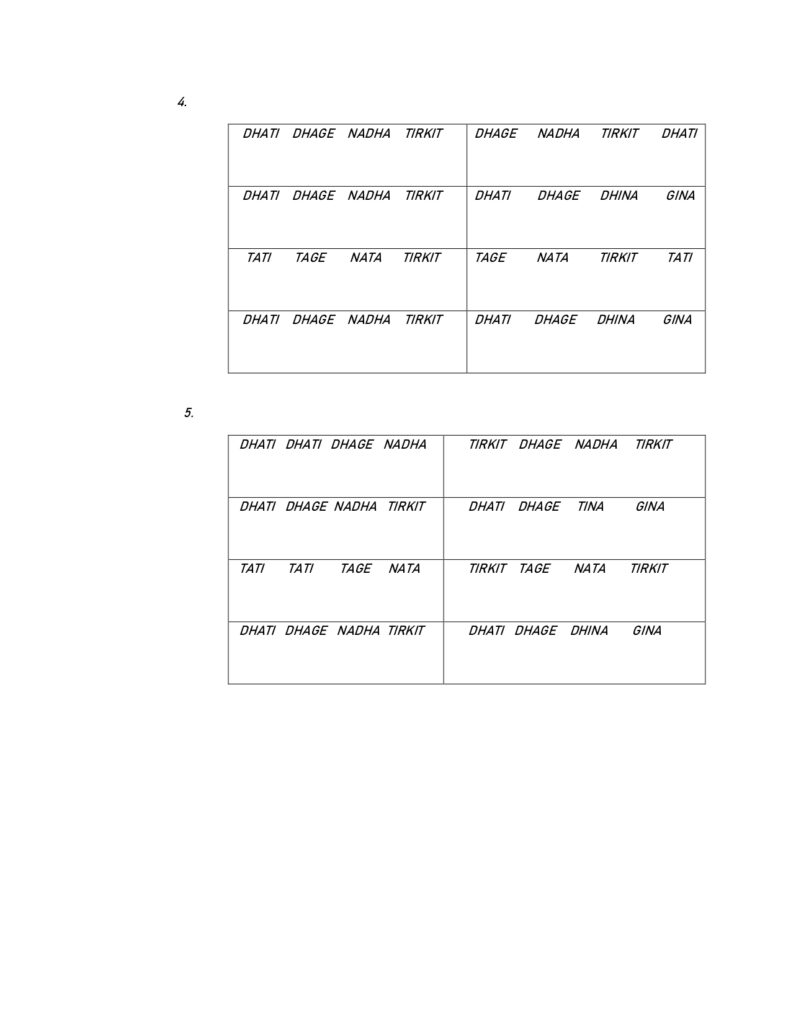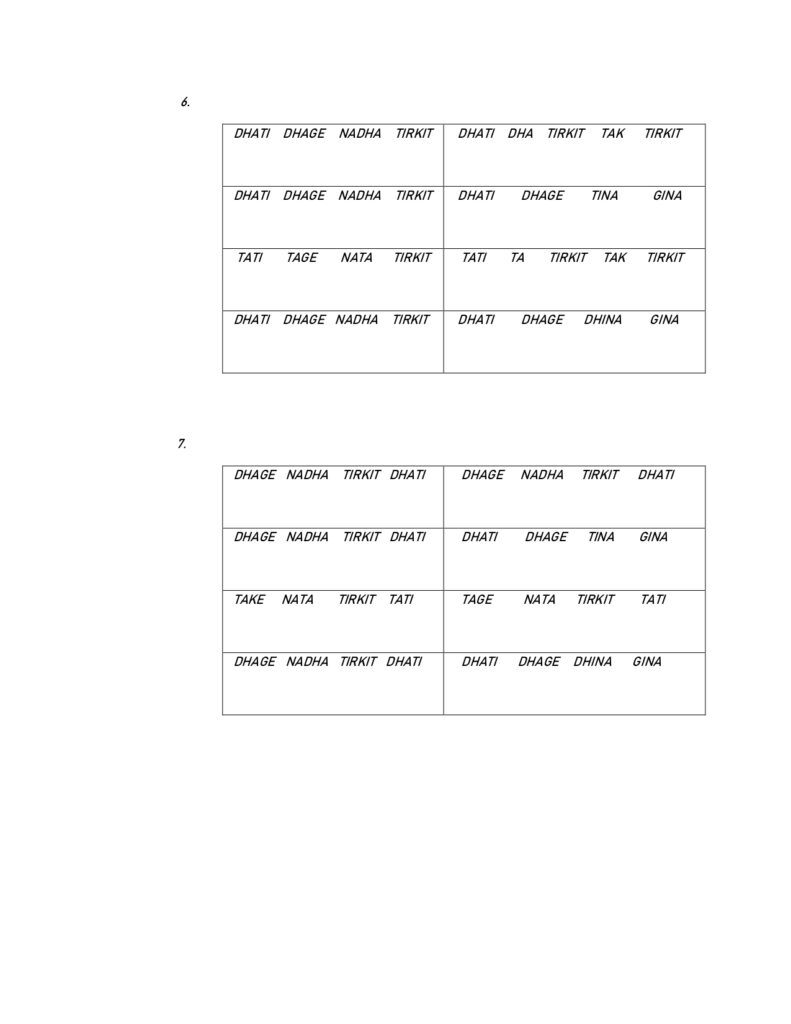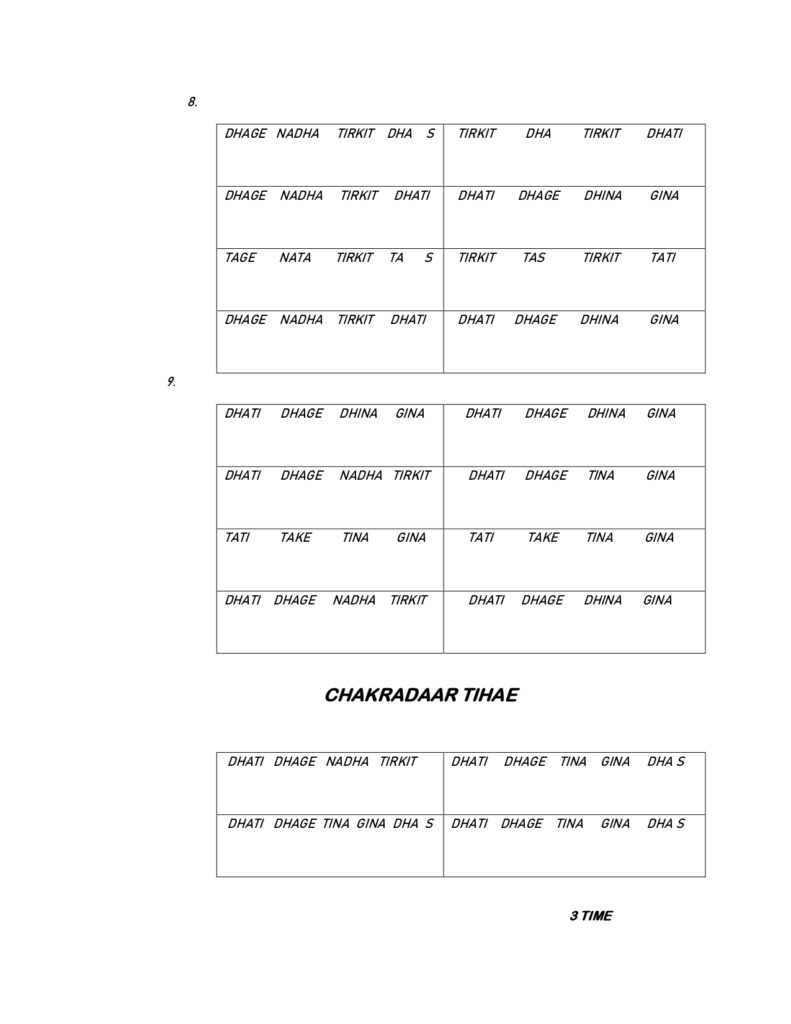Dhati Dhage Nadha Tirkit Dhati Dhage Tina Gina Kayda.
Dhati Dhage Nadha Tirkit Dhati Dhage Tina Gina
In tabla terminology, a Kayda is a fundamental composition that serves as a foundational pattern for improvisation and practice. It typically consists of a theme (sthayi) that is developed and expanded through various variations (paltas).
Teen Taal Structure:
- Beats (Matras): 16
- Divisions (Vibhags): 4 (4-4-4-4)
- Claps (Tali): 3 claps on the 1st, 5th, and 13th beats
- Wave (Khali): 1 wave on the 9th beat
The Theka (basic pattern) for Teen Taal is:
Copy code
Dha Dhin Dhin Dha | Dha Dhin Dhin Dha | Na Tin Tin Na | Ta Dhin Dhin Dha
Kayda: Dhati Dhage Nadha Tirkit Dhati Dhage Tina Gina
This specific kayda involves a combination of syllables that are typical in tabla compositions. Let’s break down the elements:
- Dhati: A combination of syllables representing specific strokes on the tabla.
- Dhage: Another combination, often following a pattern that complements the previous set of strokes.
- Nadha: Adds variation to the kayda with a different set of strokes.
- Tirkit: A rhythmic pattern often used in various tabla compositions to add complexity and variation.
- Tina Gina: Further adds to the rhythmic and tonal complexity of the composition.
Example Structure and Breakdown:
- Theme (Sthayi):Copy code
Dhati Dhage Nadha Tirkit | Dhati Dhage Tina Gina - Breakdown of Strokes:
- Dhati: Usually represents a combination like “Dha + Ti”.
- Dhage: Can be interpreted as “Dha + Ge”.
- Nadha: Could be “Na + Dha”.
- Tirkit: A common pattern “Tir + Kit”.
- Tina Gina: Can be split as “Ti + Na + Gi + Na”.
- Complete Pattern:Copy code
Dha Ti Dha Ge Na Dha Tir Kit | Dha Ti Dha Ge Ti Na Gi Na
This structure can be used as the theme, and various improvisations or paltas can be developed based on this theme.
Purpose:
- Practice: Helps tabla players improve their technique and familiarity with different stroke combinations.
- Performance: Can be used in solo performances to showcase the player’s skill in executing complex patterns and improvisations.
Teaching Points:
- Emphasize clarity and precision in each stroke to ensure the kayda is played accurately.
- Practice slowly at first to internalize the pattern, then gradually increase the speed.
- Experiment with variations to develop improvisational skills.
Conclusion:
The kayda “Dhati Dhage Nadha Tirkit Dhati Dhage Tina Gina” in Teen Taal is a structured rhythmic pattern that serves as both a practice tool and a performance piece, highlighting the tabla player’s technical proficiency and creativity.
4o




https://www.youtube.com/@BhagawanSingh
https://www.facebook.com/sbsinghtablaguru/

